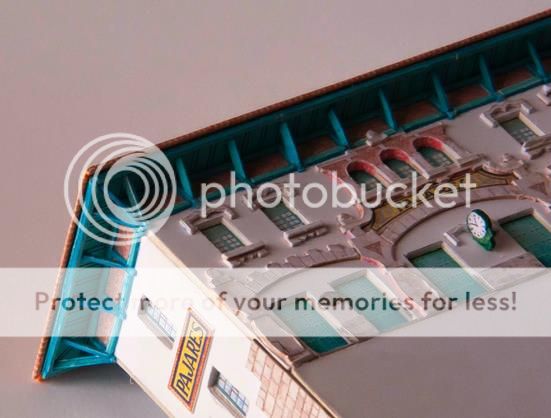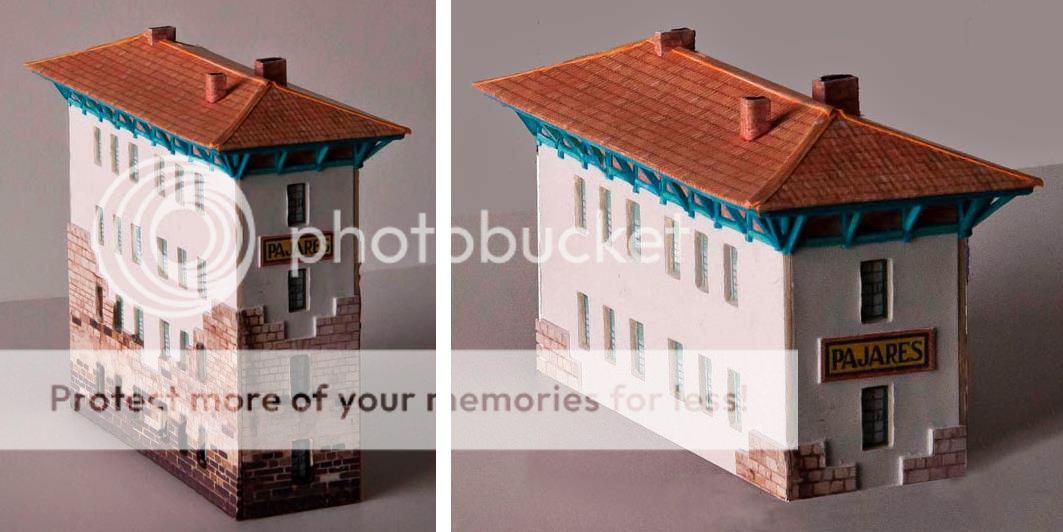I first learned about this beautiful papercraft thanks to my friend John Wagenseil, who maintains a valuable thread on the Paper Modelers forum titled “Web Page with Collection of Paper Model Sites.”
In it, John regularly shares links to paper models he finds online, many of them from Japan and often quite difficult to locate through standard Google searches.
At the end of this post, along with the link to the Shimabara Castle model, I’ll also include a direct link to John’s thread, which I highly recommend to all papercraft enthusiasts.
In 2024, Shimabara Castle celebrated its 400th anniversary with a series of events and special initiatives.
The celebrations began on New Year’s Eve 2023 with the “Shimabara Castle Countdown” event, which featured live music, food stalls, and a special nighttime opening of the castle to welcome the new year in style.
Among the commemorative actions, one highlight was the release of a 1/140 scale paper model of the castle in April 2024, allowing enthusiasts to recreate this impressive historical structure in miniature.
The model was made available for free on the Japanese website UNZEN.JP, managed by a group of volunteer technicians based mainly in the city of Unzen, Nagasaki Prefecture.
This group works with a wide range of technologies, including internet, IT, 3D modeling, CG, VR, AR, and app development. They also offer services such as 3D scanning and printing, cutting, and papercraft creation.
The model fits on a single printed sheet, and to maintain the 1/140 scale, it should be printed on A3 paper. If printed on A4, the approximate scale becomes 1/100. On Letter-size paper, the model ends up at about 1/115.
Located in Nagasaki Prefecture, Shimabara Castle is one of the most iconic constructions from the Edo period, notable both for its architecture and the historical context in which it was built.
Construction began in 1624 and was completed in 1627 under the orders of Matsukura Shigemasa, a daimyo known for his harsh rule, particularly against Christian peasants in the region.
The castle was not only a military fortress but also a symbol of the Tokugawa shogunate’s authority and its crackdown on Christianity, which was quietly spreading throughout southern Japan at the time.
Just a decade later, between 1637 and 1638, the region witnessed the Shimabara Rebellion, a major uprising driven by oppressive taxes and religious persecution. Thousands of peasants, many of them Christians, rose up against the feudal regime.
While the rebels entrenched themselves in Hara Castle (now in ruins), Shimabara Castle played a strategic role in suppressing the revolt, serving as a base for the shogunate forces that eventually surrounded and annihilated the insurgents.
With the arrival of the Meiji era and the end of the feudal system, the castle was completely demolished in 1874 as part of Japan’s modernization reforms. For decades, only remnants of the original stone walls and moat remained.
It wasn’t until 1964 that Shimabara Castle reemerged — or at least its main keep, which was reconstructed in reinforced concrete as part of a historical preservation effort.
Today, the donjon houses a museum dedicated to the region’s history, the Shimabara Rebellion, and the legacy of Christianity in Japan, keeping alive the memory of a turbulent but deeply significant chapter in the nation’s past.
Fiquei sabendo da existência deste belo papercraft graças ao meu amigo John Wagenseil, que mantém uma valiosa thread no fórum Paper Modelers, intitulada “Web Page with Collection of Paper Model Sites”.
Nela, John compartilha regularmente links para modelos de papel que encontra pela internet, muitos deles do Japão e, geralmente, bastante difíceis de serem localizados em buscas comuns no Google.
No final deste post, além do link para o modelo do Castelo de Shimabara, deixarei também o link direto para a thread de John, que recomendo fortemente a todos os entusiastas de papercraft.
Em 2024, o Castelo de Shimabara celebrou seu 400º aniversário com uma série de eventos e iniciativas especiais. As comemorações começaram ainda na véspera do Ano Novo de 2023, com o evento "Countdown do Castelo de Shimabara", que contou com apresentações musicais, barracas de comida e a abertura noturna do castelo para receber o novo ano em grande estilo.
Entre as ações comemorativas, destaque para o lançamento, em abril de 2024, de um modelo em papel em escala 1/140 do castelo, que permite aos entusiastas recriar em miniatura essa impressionante construção histórica.
O modelo foi disponibilizado gratuitamente no site japonês UNZEN.JP, mantido por um grupo de técnicos voluntários atuantes principalmente na cidade de Unzen, província de Nagasaki.
Esse grupo trabalha com diversas tecnologias, como internet, TI, modelagem 3D, CG, VR, AR e desenvolvimento de aplicativos. Também oferecem serviços como digitalização e impressão 3D, corte e criação de papercrafts.
O modelo ocupa apenas uma folha impressa e, para manter a escala 1/140, deve ser impresso em papel no formato A3. Caso seja impresso em A4, a escala aproximada será 1/100. Já no formato Carta, a escala fica em torno de 1/115.
Situado na província de Nagasaki, o Castelo de Shimabara é uma das construções mais emblemáticas do período Edo, tanto por sua arquitetura quanto pelo contexto histórico em que foi erguido.
Sua construção começou em 1624 e foi concluída em 1627, sob as ordens de Matsukura Shigemasa, um daimyo conhecido por sua rigidez, especialmente contra os camponeses cristãos da região.
O castelo foi projetado não apenas como uma fortaleza, mas também como um símbolo da autoridade do xogunato Tokugawa e da repressão à fé cristã, que ganhava força no sul do Japão.
Apenas uma década depois, entre 1637 e 1638, a região foi palco da famosa Rebelião de Shimabara. Revoltados com os altos impostos e a perseguição religiosa, milhares de camponeses, muitos deles cristãos, se insurgiram contra o domínio feudal.
Embora os rebeldes tenham se entrincheirado no Castelo de Hara (hoje em ruínas), o Castelo de Shimabara teve um papel estratégico na repressão da revolta, servindo como base para as tropas do xogunato que cercaram e aniquilaram os insurgentes.
Com o advento da Era Meiji e o fim do sistema feudal, o castelo foi completamente demolido em 1874, como parte das reformas de modernização do país. Durante décadas, apenas vestígios das muralhas e do fosso permaneceram no local.
Somente em 1964 o Castelo de Shimabara ressurgiu — ou pelo menos sua torre principal, reconstruída em concreto como parte de um esforço de preservação histórica.
Hoje, o donjon abriga um museu dedicado à história da região, à Rebelião de Shimabara e à presença cristã no Japão, mantendo viva a memória de um período conturbado, mas profundamente significativo.
Link to the papercraft : Shimabara.Castle.Miniature.Paper.Model.by.UNZEN
Link to John`s thread: Web.Page.With.Collection.Of.Paper.Model.Sites.by.J.Wagenseil


























